
views
Picking Paints
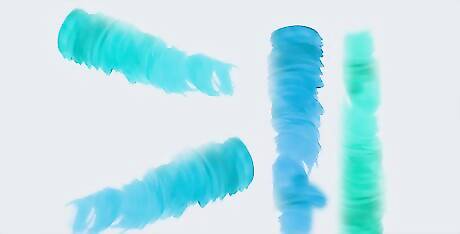
Decide which shade of turquoise you want. "Turquoise" generally describes a bright, predominantly blue mixture between blue and green. You can, however, mix various shades within the turquoise spectrum: add a glob of white or light-grey paint for a pale and subtle turquoise, or stick to bright blues, greens, and yellows to mix a turquoise that pops. Consider whether you want a brighter or a more subdued hue.
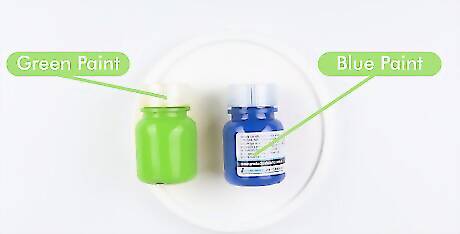
Buy blue and green paint. The paint medium does not matter much—acrylic, oil, watercolor, etc.—but it will be easier to smoothly mix two paints of the same type. Look for paint online or at an art supply store. Keep your eyes peeled: you may be able to find a pre-mixed turquoise paint that serves your purposes. If you start with turquoise, you can use tiny dollops of blue, green, white, or yellow to minutely tweak the pigment. If you are new to painting, consider starting with acrylics. Acrylics are a forgiving and easy-to-mix medium, and you can usually buy them in small, cheap squeeze-bottles. If you buy your paint at an art supply store, ask the staff which products will blend well into turquoise. They might be able to suggest specific green and blue hues that are ideal for mixing the shade you want, but do not rely on this. Know which shades you're looking for going in.
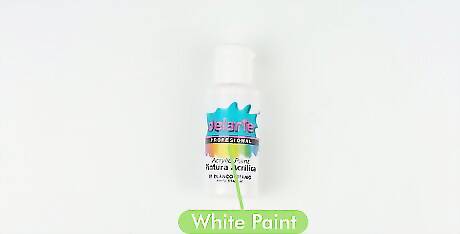
Buy white and/or yellow paint for paler hues. If you want a paler and more subdued shade of turquoise, you can mix blue and green with white or yellow. The specific hue of white or yellow is largely a matter of preference, so choose something that fits with the mood or style of your vision. For instance, you might choose a warm off-white as a base for turquoise water when painting a tropical beach scene; you might choose a starker, more "artificial" white as the base for painting a cold and distant turquoise planet.
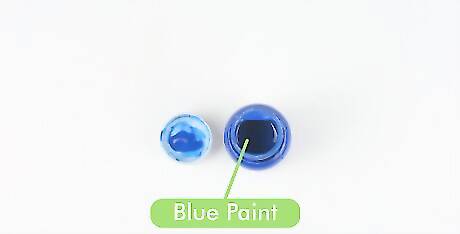
Use blue paint with a color bias toward green. Try cyan, cobalt, cerulean, ultramarine – any blue hue that is more greenish than purplish. There are small amounts of other colors hidden within each pigment, which means that each paint shade is predisposed to mix well with a certain other shade. Turquoise is basically a mix of blue and green, so make sure to use a blue that already contains green pigments. You should be able to guess at the pigment bias just by looking at a color: a greenish-blue suggests a green bias, while a purplish-blue hints at a red bias. Phthalo blue and phthalo green pigments are some of the most commonly-used in turquoise paints, and they give the purest form of turquoise. Phthalo blue (short for the pigment phthalocyanine) contains a strong green bias, so it is optimally suited for mixing turquoise. Many commercial paint brands feature a "phthalo blue" product. Blue paint contains either red pigments or green pigments. If a given blue pigment has a green bias, it contains more green pigment than red pigment. Other (typically purplish) blue pigments have a red bias, and these will be less suited to making turquoise. You can't find a "pure" blue paint pigment – that is to say, a blue paint hue that will make both a good green (when mixed with yellow) and a good purple (when mixed with red). This is because the blue will always have a bias towards either red or green due to the chemical impurities within each pigment.
Mixing a Bright Turquoise

Prepare your green and blue paint. Glop a small amount of turquoise-blue (cyan) paint on one side of your palette, and squeeze a bit of green paint on the other side. Alternately, squeeze the blue and green paint directly into the same glob. If you don't already have green paint, you'll need to make it. Mix equal increments of blue and yellow to create green. If you don't have a dedicated painting palette, feel free to mix your paints on any clean, dry surface. Try mixing paint on a plate, a sheet of paper, a strip of cardboard, or a piece of tile. Make sure that you aren't painting over something important.

Use a 2:1 ratio of blue to green. Turquoise contains more blue pigment than green, so try using twice as much blue paint as green paint. Feel free to experiment with different ratios, but use 2:1 as a basic reference. Slightly more green paint—say, a 2:1.5 ratio of blue to green—will give you a deep sea-green turquoise. Slightly less green paint (than the 2:1 ratio) will mix a subtle turquoise that is nearly true-blue. Consider adding a dash of yellow paint for a brighter shade. Try a 1:5 or 1:6 ratio of yellow to blue. Mix the yellow in with the blue and the green. Add a bit of white paint if the shade is too bright. White will pale and subdue the turquoise hue so that it isn't so visceral.

Mix the paints. To start, glob one paintbrush-scoop of green onto your palette, then mix that glob with two scoops of blue. Continue to mix the paints together until the paint is evenly distributed throughout your color sample. As you mix, the blue should blend with the green until the glob takes on a distinctly turquoise hue. Make sure that you use as much paint as you need – or even slightly more. If you try to add more blue and green midway through the painting process, you may confound the ratio and wind up with an uneven shade of turquoise.
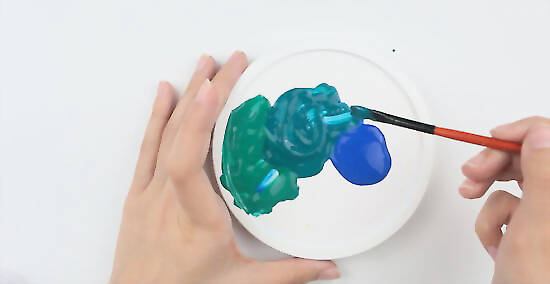
Keep tweaking the mixture until you're completely satisfied. Once the vortex of turquoise paint is uniformly mixed, look it over to make sure that you're happy with the color. Try painting the sample onto a piece of scrap material – paint often changes its qualities somewhat when it's spread. If you aren't satisfied, continue to add small, intentional increments of blue, green, yellow, or white paint until you have exactly the shade of turquoise that you need.
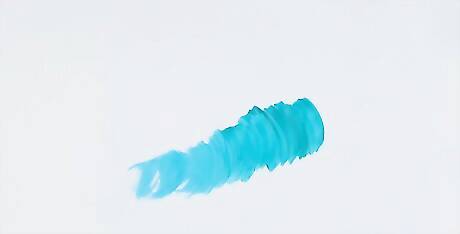
Paint. Once you've mixed your turquoise, you're ready to apply it. Make sure that the hue of turquoise is exactly what you want. Feel free to paint with the same brush that you used to make the turquoise, but consider cleaning the brush first for the sake of precision. If you need to replenish your turquoise supply, make sure to add blue and green in the exact same increments that you used at first. If you mix in more blue/green paint midway through, but you can't get the ratio quite as it was: consider mixing a large amount of the new hue, then painting over all of the original turquoise to even things out.
Mixing a Pale Turquoise

Use white as the base color. If you want to mix an especially pale shade of turquoise, start with white or a very light blue. White paint will make up the bulk of the mixture, so use about as much white paint as you think you'll need – perhaps a bit more. Consider using a near-white grey for a slightly darker shade of turquoise.
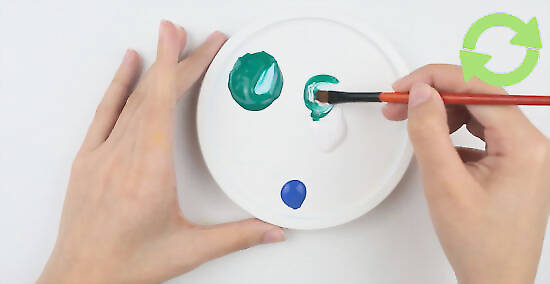
Mix the paint. Try a 2:1:4 ratio of blue:green:white. There is no single correct way to mix a pale turquoise, so you will need to feel out the ratio for yourself. Start small, with just a few drops of blue and green in the midst of the white paint, and mix the parts together until you have a uniform hue. Gauge whether you want a brighter turquoise, or an even paler turquoise, and add more blue or white paint accordingly. If you ever want to replicate this color, make sure to record the precise ratio. Remember – until you start painting, you can always adjust the pigment ratio in your turquoise. Make sure that you're satisfied before you settle down to paint. Make sure to use at least as much paint as you'll need to complete your project. It can be a complex process to try to replicate paint-mixture ratios once you've already painted half of the piece.
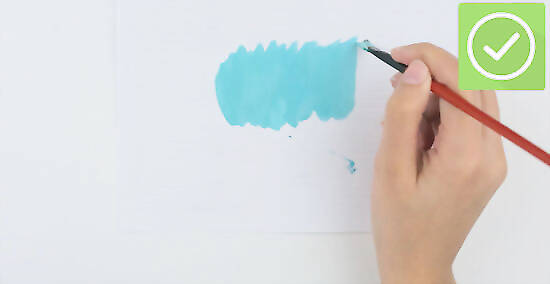
Paint. Once you're satisfied with the pale turquoise, you're ready to use it. Splash your color onto your chosen surface and enjoy the pleasure of mixing your own paint!




















Comments
0 comment